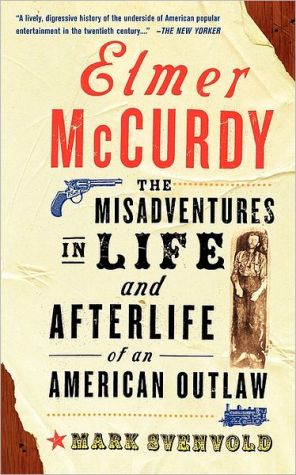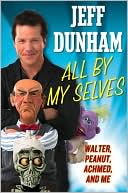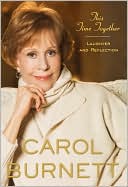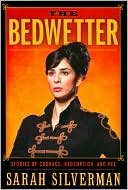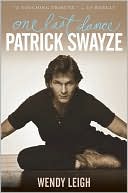Elmer McCurdy: The Misadventures in Life and Afterlife of an American Outlaw
This is the story of Elmer McCurdy, a failed plumber from Bangor, Maine, who drifted west to become a failed outlaw. He arrived in Oklahoma a few decades after the golden age of outlaws and attempted to resurrect the lost art of train robbing. In 1911, after a short spree of comically bungled robberies, a sheriff's posse caught up with him and shot him dead.In death, Elmer McCurdy accidentally found fame. From the Oklahoma funeral home that propped up his preserved corpse and charged a...
Search in google:
"Svenvold offers sharp reflections on the cult of the outlaw and the charms of hucksterism, while staying keenly attuned to the wonderful strangeness of a culture that could transform a corpse into a celebrity."- The New Yorker The New Yorker Elmer McCurdy was a failed plumber turned failed criminal who was shot dead by a posse in 1911, after bungling a train robbery. In life, McCurdy was a classic two-bit loser, but after his death he was suddenly glorified as a hard-riding outlaw, and his embalmed body was turned into a sideshow attraction. The tale of McCurdy's corpse becomes a lively, digressive history of the underside of American popular entertainment in the twentieth century, from carnivals to exploitation films. Avoiding a ponderous cultural-studies tone, Svenvold offers sharp reflections on the cult of the outlaw and the charms of hucksterism, while staying keenly attuned to the wonderful strangeness of a culture that could transform a corpse into a celebrity.
\ The New YorkerElmer McCurdy was a failed plumber turned failed criminal who was shot dead by a posse in 1911, after bungling a train robbery. In life, McCurdy was a classic two-bit loser, but after his death he was suddenly glorified as a hard-riding outlaw, and his embalmed body was turned into a sideshow attraction. The tale of McCurdy's corpse becomes a lively, digressive history of the underside of American popular entertainment in the twentieth century, from carnivals to exploitation films. Avoiding a ponderous cultural-studies tone, Svenvold offers sharp reflections on the cult of the outlaw and the charms of hucksterism, while staying keenly attuned to the wonderful strangeness of a culture that could transform a corpse into a celebrity.\ \ \ \ \ Publishers WeeklyCarnival sideshows, train robbers and mummies all have an inevitable draw. But in this thoughtful account of one iconic American outlaw, journalist and poet Svenvold uses these topics to examine a deeper issue: the origin of American entertainment obsessions. With a languorous storyteller's flair, Svenvold thoroughly teases out the story of Elmer McCurdy, a "screw-up and ne'er-do-well bandit bungler who had accidentally achieved fame long after death." McCurdy's "pathetic, nine-month crime spree" of attempted train robberies-long after the end of the great era of train robbers-opens this well-drawn story, which focuses more on McCurdy's afterlife, when his mummified body was passed from traveling circus to wax museum to its final resting place, a graveyard in Oklahoma, where the body of the outlaw, who had become larger than life, was ultimately transformed into a "site, a locus, a mirror of the fantasy life of an American public." The account becomes a meditation on fame and death and our nostalgia for the romantic myth of the American West. Svenvold pays homage to and expands on his predecessors' work-Richard Basgall's The Career of Elmer McCurdy, Deceased and a BBC documentary-offering rich treatments on everything from circus life to care of cadavers. While he may not be the first to offer the facts of this wonderfully bizarre story, Svenvold's evocative treatment will lure in anyone looking for a well-spun tale. (Nov. 1) Copyright 2002 Cahners Business Information.\ \ \ Library JournalPoor Elmer McCurdy. After this comically inept, would-be train robber met a violent end in a shootout in 1911 Oklahoma, his corpse was embalmed with arsenic and began a decades-long second career as a sideshow attraction and Z-movie film prop. McCurdy's unique course through the American entertainment industry has attracted some interest in the past (Richard J. Basgall's The Career of Elmer McCurdy, Deceased). This grim but quirky tale of a man denied any dignity in life or death is considerably enlivened by poet Svenvold's picturesque and often humorous prose describing the history of the "Oklahoma Outlaw's" place in campy nostalgia. However, the thread of McCurdy's interesting journey is regularly lost among forays into such diverse topics as Douglas MacArthur's early army career and Osage Indian land rights. As a result, the reader soon feels as if the ticket were paid for but that there was nothing under the big top. For a similarly themed choice, consider Michael Paterniti's Driving Mr. Albert: A Trip Across America with Einstein's Brain. Recommended for libraries with large American studies collections. Elizabeth Morris, Otsego District P.L., MI Copyright 2002 Cahners Business Information.\ \ \ \ \ Kirkus ReviewsLike Elvis, Elmer McCurdy pursued a lively theatrical career long after he died. A feckless western outlaw who was killed in 1911, he was finally interred in a Boot Hill grave 66 years later. His story, still a cult cowboy saga, is told anew by Svenvold (Soul Data, 1998), a poet turned earnest reporter. The fabled highwayman-his name, without reason, is sometimes linked with Butch, Sundance, the Daltons and the James boys-was an inept train robber, spectacularly unsuccessful in his few bumbling forays against decent folk. From his native Maine, the young man went west in search of somebody's fortune. In the Army there, he almost learned the rudiments of demolition. After discharge from Ft. Leavenworth, discovered in St. Joe lugging burglar's tools, he was jailed briefly. He held up a train thought to be carrying abundant cash, though it yielded little more than a few bottles of rot-gut. McCurdy, 31, was soon killed by a posse. That's just the start of his story. Dead, he entered showbiz. The undertaker kept his body for display, and the mummified remains eventually toured the country in sideshows. In time, employed by entertainment's bottom-feeders, the mummy went to Hollywood to appear in exploitation flicks. Finally, he-or it-was discovered in a defunct amusement park, painted in Day-Glo and falling apart. Even now, his grave is visited by ballyhoo. The story has been told before, but Svenvold brings a poet's touch to the western mythopoeia. Some of his topics are barely relevant, like a sketch of Douglas MacArthur; others are more germane, like a medical examiner's work or the carney world. With frequent imaginings and surmises, Svenvold conducts a literary séance, using hints andclues to conjure the spirit of McCurdy. Doing so, he presents a decidedly entertaining chunk of American pop culture. R.I.P., Elmer McCurdy. Author tour\ \
